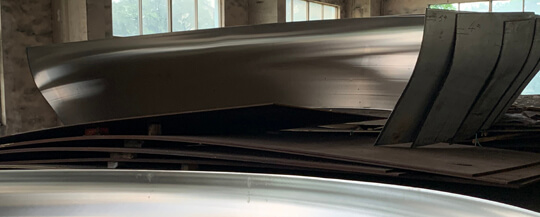The sand blasting method uses compressed air to spray sand of a certain particle size on the rusted surface of the parts through a spray gun. It not only removes rust quickly, but also prepares the surface for painting, spraying, electroplating and other processes. The sandblasted surface can achieve a clean and rough surface requirement, thereby improving the bonding force between the cover layer and the parts.
Commonly used sandblasting and rust removal methods include dry sandblasting, wet sandblasting, dustless sandblasting, and high-pressure water sandblasting. Dry sandblasting is dusty, which is not environmentally friendly and harmful to health; although wet sandblasting is dust-free, the moisture will cause the surface to rust again. The way to prevent this is to add 1% to 15% of rust inhibitor (trisodium phosphate, sodium carbonate, sodium nitrite, etc.) and emulsifier or soapy water to the water, so that the surface will not rust in a short period of time, and then Apply maintenance primer. Dust-free blasting is the continuous circulation of sand adding, sand blasting and sand collection recovery in a closed system to avoid dust flying. High-pressure water blasting is mainly used for large-scale rust removal, such as hulls, oil tanks, oil tanks, boilers, etc. Passivating agents and soapy water are also often added to the water.
Shot blasting or sand blasting
1. Derusting quality level requirements
① All steel surfaces to be coated with water-based inorganic zinc-rich paint must be shot blasted or sandblasted to meet the requirements of ISO8501-1 (GB8923-88).
② When partially repairing the coating, the steel surface must be polished to ISO8501-1 (GB8923-88) St3 level.
2. Surface roughness requirements: The surface roughness requirements should be controlled within the range of 35~65μm.
3. Abrasive
① In order to ensure that the surface of the steel reaches the specified cleanliness and surface roughness after shot blasting or blasting, it is recommended to use angular-shaped or round-shaped stainless steel sand with a particle size of -.
② The abrasive used should be clean and dry, and should not be contaminated by organic matter.
4. Compressed air: Compressed air for blasting, the pressure should not be lower than Mpa.
